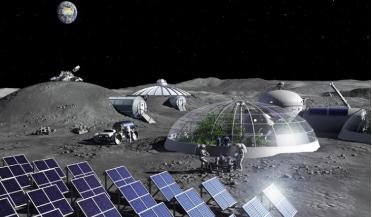 January 2023
LUNAR OASIS – architectural visions for an integrated lunar habitat
January 2023
LUNAR OASIS – architectural visions for an integrated lunar habitat
... entrance to the habitat. In addition, three different zones should be noted: the crew accommodation (for privacy), the greenhouse (for its food supply) and a research lab (for various studies of the lunar environment). There are...
... would we call it ‘exploration? – and to cope with this the system requires resilience. While we do not yet have a greenhouse on another planet, we do have a long list of creative solutions to both big and small emergencies in space, from the...
 March 2021
iPhone moment for the Earth observation industry
March 2021
iPhone moment for the Earth observation industry
... signals from navigation satellites to better understand our weather (Spire, GeoOptics). We can also keep track of greenhouse gas emissions (GHGSat, Bluefield, MethaneSat), keep an eye on the energy efficiency of the buildings in which we live...
 February 2022
Building space-qualified detector chips
February 2022
Building space-qualified detector chips
..., however, are the levels of ozone which protect us all from damaging UV radiation and the abundance of other greenhouse gases, such as methane. While it is possible to measure the concentrations of these gases from sensors stationed on Earth, such...
 October 2023
The multidisciplinary world of space habitation design
October 2023
The multidisciplinary world of space habitation design
...several space professionals as guest lecturers, focused on research and design for a lunar permanent outpost integrated with a greenhouse, permanently inhabited by eight crewmembers, and located at the lunar south pole near the Shackleton crater. The...
 December 2014
Terraforming Mars: from CFCs to Total Recall
December 2014
Terraforming Mars: from CFCs to Total Recall
... as freons that have been implicated in the destruction of stratospheric ozone on Earth, but which are also good greenhouse gases. This mechanism, though, would require innumerable and continuing numbers of interplanetary flights because the CFCs...